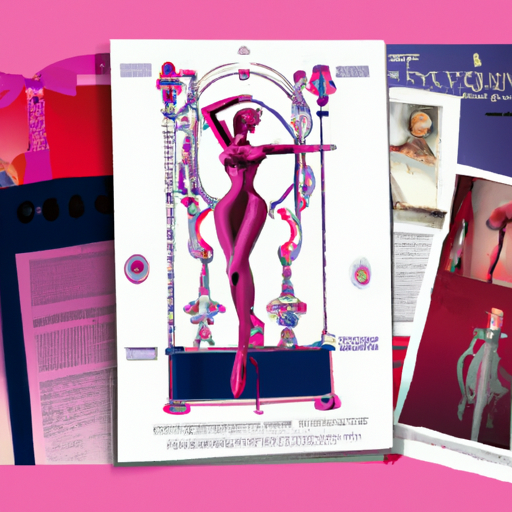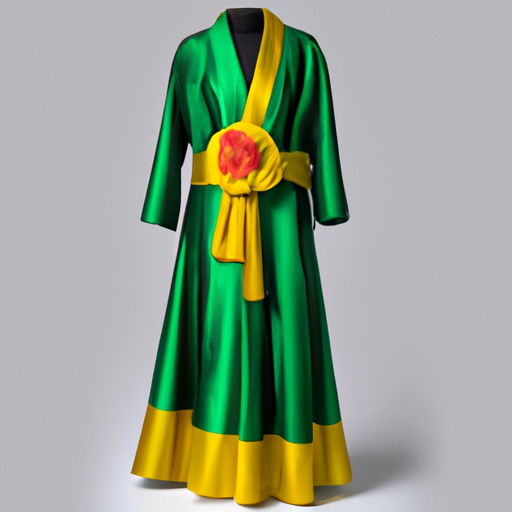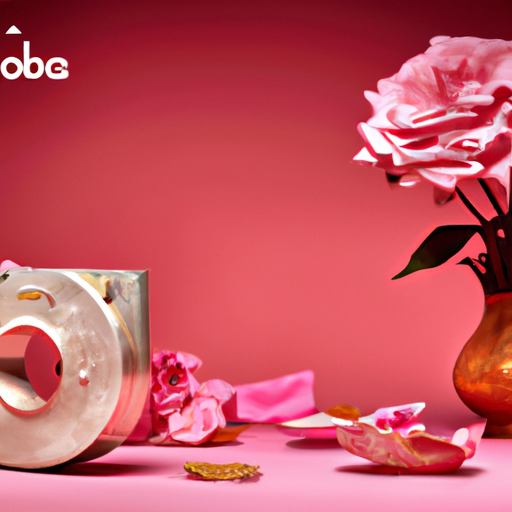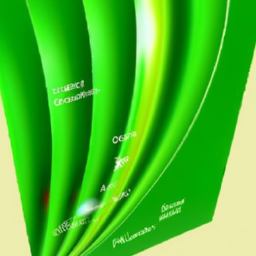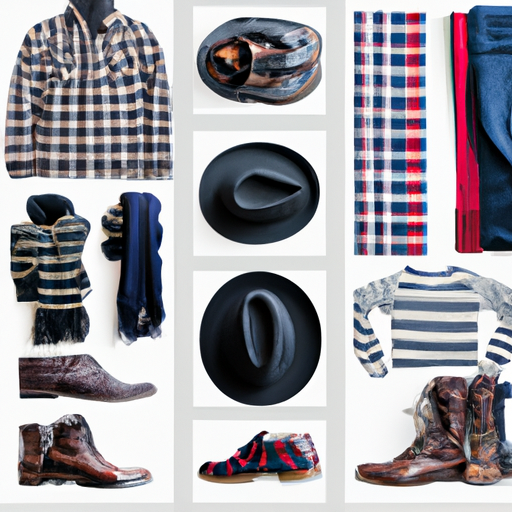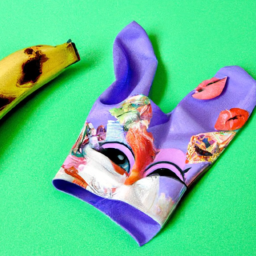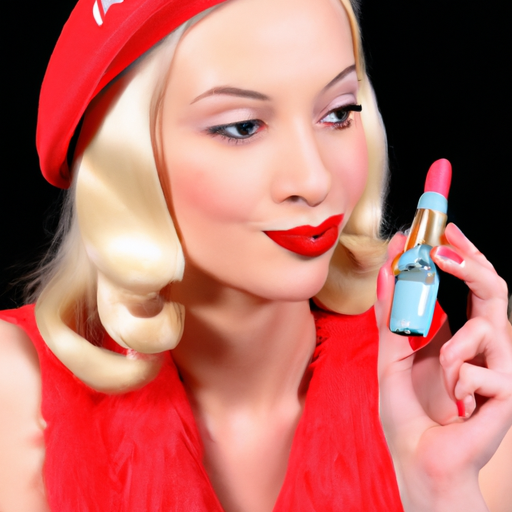History Of Fashion Trends
So, you’re curious about the history of fashion trends? Well, get ready to embark on a stylish journey through time! From Victorian corsets to neon tracksuits of the 1980s, fashion has always been a reflection of the ever-changing tastes and desires of society. In this article, we’ll explore how fashion trends have evolved over the years, showcasing how our sense of style has evolved alongside cultural, social, and economic shifts. From iconic fashion moments to surprising influences, you’ll discover the fascinating stories behind the clothing that has defined our past and continues to shape our present. So, fasten your seatbelts, because we’re about to take a stylish trip through history!
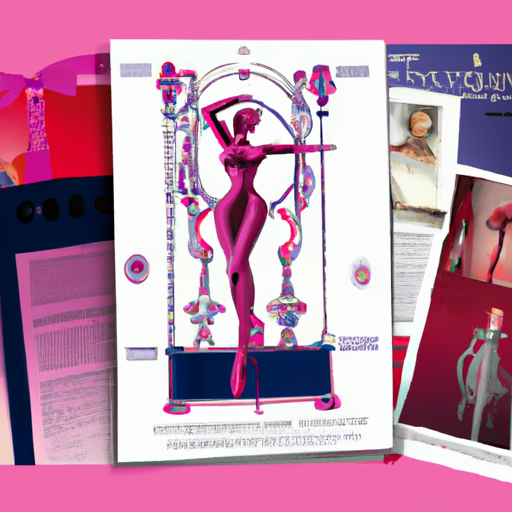
Table of Contents
Ancient Fashion Trends
Egyptian Fashion
In ancient Egypt, fashion served both practical and symbolic purposes. The ancient Egyptians believed in clothing as a reflection of social status and identity. The clothing styles varied between men and women, with linen being the most commonly used fabric.
For men, the most common garment was the loincloth, which was a simple piece of fabric wrapped around the waist. Wealthier men would wear a longer skirt-like garment called a shendyt. Women, on the other hand, wore a variety of garments, including a straight fitting dress called a kalasiris or a more fitted gown known as a sheath dress.
Greek Fashion
Greek fashion was characterized by simplicity, elegance, and a focus on the natural form of the body. The classical Greek garments consisted of rectangular pieces of fabric that were draped and folded in various ways to create beautiful and flowing outfits.
Men wore a tunic known as a chiton, which was draped over one shoulder and reached the knees. Women typically wore a peplos, which was a sleeveless garment that was pinned at the shoulders and belted at the waist. Over time, the peplos evolved into a more form-fitting garment called a chitoniskos, which accentuated the natural curves of the body.
Roman Fashion
Roman fashion was heavily influenced by the Greeks, but the Romans added their own twist to the styles. The toga, a large and draped garment, was one of the most iconic Roman pieces of clothing. It was worn by men and indicated their social status. Women, on the other hand, wore a stola, which was a long, loosely fitted dress, often accompanied by a palla, a draped cloak.
Medieval Fashion Trends
Feudal System and Clothing
During the medieval period, the feudal system had a significant impact on fashion. Clothing was used as a way to distinguish between social classes, with sumptuary laws regulating what each class could wear. Noble and wealthy individuals could wear luxurious fabrics and ornate garments, while peasants were limited to simple and practical clothing.
Noble women wore extravagant gowns with rich fabrics, fur trimmings, and elaborate headdresses. Men wore tunics, breeches, and hose, often adding on layers of robes or capes. Peasants, however, had more basic attire made from cheaper and less elaborate materials.
Religious Influence on Fashion
Religion played a powerful role in shaping medieval fashion. The influence of the Catholic Church led to the development of garments such as the chasuble, cope, and alb, which were commonly worn by clergy members. Monastic orders, such as the Franciscans and Dominicans, adopted specific clothing styles to reflect their religious beliefs and affiliations.
Additionally, religious symbols and motifs were incorporated into clothing, such as the use of crosses, angels, and saints. The religious influence on fashion during the medieval period emphasized modesty and a sense of piety.
Renaissance Fashion
The Renaissance period marked a shift towards a more humanist approach to fashion, focusing on the individual and their expression of personal style. Clothing became a way to display wealth and social status, with luxurious fabrics, intricate embroidery, and elaborate details becoming prominent.
Women’s fashion emphasized a high waistline, a narrow waist, and a full skirt. Renaissance men wore a variety of garments, including doublets, hose, and breeches. Fashion was viewed as a form of art, and tailors and dressmakers gained recognition for their craftsmanship and creativity.
Rococo and Baroque Fashion Trends
Rococo Style
The Rococo style emerged in the 18th century and was characterized by its indulgence in luxury, elegance, and frivolity. Fashion during this era was marked by ornate, delicate, and light-hearted designs. The dresses for women featured delicate fabrics, pastel colors, and intricate details such as bows, ruffles, and lace.
Men’s fashion in the Rococo period also embraced an extravagant aesthetic, with elaborate coats, embroidered waistcoats, and breeches. The Rococo style was highly influenced by aristocratic and courtly life, embodying a sense of opulence and refinement.
Baroque Style
The Baroque period followed the Rococo era and was known for its grandiosity, drama, and meticulous attention to detail. Baroque fashion featured elaborate, structured garments with bold silhouettes and rich embellishments. Women’s dresses had voluminous skirts with intricate drapery, ornate embroidery, and corsets that accentuated the waistline.
Men’s fashion in the Baroque period focused on exaggerated shapes, with wide shoulders and tight-fitting breeches. The use of sumptuous fabrics, such as velvet and brocade, added to the luxurious and lavish nature of Baroque fashion.
Fashion Icons of the Era
Throughout these periods, there were several influential fashion icons who shaped and popularized the trends of their time. From Marie Antoinette’s extravagant style during the Rococo era to the empowering fashion statements made by Queen Elizabeth I during the Renaissance, these individuals left a lasting impact on fashion history.
Other notable fashion icons include Madame de Pompadour, known for her sophisticated and elegant Rococo style, and Louis XIV, who set the trends with his lavish and opulent Baroque wardrobe. These fashion icons served as inspiration for both the upper class and the masses, influencing the way people dressed and expressing their artistic and cultural values through clothing.
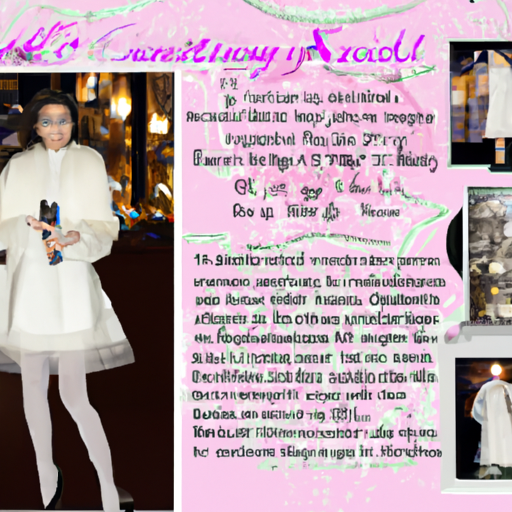
Victorian Fashion Trends
Victorian Silhouette
The Victorian era is recognized for its distinct silhouette, characterized by the emphasis on a slim waist, full bust, and full skirt. Women’s fashion during this period was defined by corsets, which cinched the waist and created the desired hourglass figure. Dresses had low necklines and wide, bell-shaped skirts, often supported by crinolines or hoops.
Men’s fashion in the Victorian era featured tailored suits with structured jackets, waistcoats, and trousers. The clothing for both men and women was heavily influenced by the social etiquette and formalities of the time, with fashion signaling one’s social status and adherence to societal norms.
Crinolines and Bustles
Crinolines and bustles were key elements in Victorian fashion. Crinolines were used to create the voluminous skirts, providing a stiff structure beneath the dress. They were made from various materials, such as horsehair or steel hoops, and allowed for the creation of large, wide skirts.
As the Victorian era progressed, crinolines gave way to bustles, which were placed at the back of the dress to create a protruding rear. Bustles were made from wire or padding and gave the illusion of a fuller figure. Both crinolines and bustles added drama and grandeur to the fashion of the time.
Industrial Revolution’s Impact
The Industrial Revolution had a significant impact on Victorian fashion. The development of machinery and mass production made fabric and clothing more accessible to the general population. Ready-to-wear clothing became more common, enabling individuals from different social classes to keep up with the latest trends.
Additionally, advancements in textile manufacturing allowed for the production of new and innovative fabrics, such as synthetic dyes and luxurious materials like silk and velvet. These advancements in production techniques and fabric availability contributed to the diversity and accessibility of Victorian fashion.
Art Nouveau and Art Deco Fashion Trends
Art Nouveau Style
Art Nouveau emerged in the late 19th century as a rejection of the excessive ornamentation seen in the Victorian era. The style drew inspiration from nature, emphasizing sinuous lines, organic forms, and intricate floral motifs. Fashion during the Art Nouveau period embraced flowing and fluid designs, with soft fabrics, delicate lace, and ethereal color palettes.
Women’s dresses featured high necklines, long sleeves, and A-line or columnar silhouettes. Hair accessories, such as ornate headbands and veils adorned with flowers, were popular. Men’s fashion also embraced the naturalistic aesthetic, with looser-fitting suits and soft colors.
Art Deco Style
Art Deco emerged in the 1920s and 1930s and represented a shift towards a more modern and geometric aesthetic. The style embraced bold shapes, clean lines, and bold contrasts. Art Deco fashion was marked by its sleek and streamlined designs, often featuring futuristic elements and metallic embellishments.
Women’s dresses had dropped waistlines, geometric patterns, and beaded embellishments. Men’s fashion during the Art Deco era embraced a more fitted silhouette, with high-waisted trousers and double-breasted jackets. The use of luxurious materials and innovative techniques, such as beading and embroidery, added to the glamour and allure of Art Deco fashion.
Flapper Fashion
The flapper fashion of the 1920s represented a significant cultural shift in society, with women adopting a more liberated and independent lifestyle. Flapper dresses were characterized by their straight, loose-fitting silhouettes, emphasizing the freedom of movement. These dresses were typically adorned with fringes, beads, and sequins, adding a sense of movement and glamour.
Flapper fashion also included short bob hairstyles, cloche hats, and long necklaces. The androgynous look became popular, with women rejecting the corsets and restrictive clothing of previous eras. The flapper fashion of the Art Deco period embodied the spirit of the time, reflecting the changing attitudes and desires of women in society.
The Swinging Sixties
Mod Fashion
The swinging sixties brought about a revolution in fashion, with the mod subculture at the forefront. Mod fashion was characterized by its clean lines, bold patterns, and bright colors. It embraced a youthful and modern aesthetic, drawing inspiration from popular culture and the rising music scene.
Women’s mod fashion featured mini skirts, shift dresses, and geometric patterns. The use of bold colors, such as bright yellows and vibrant blues, was popular. Men’s fashion embraced slim-fitting suits, skinny ties, and ankle-length pants. The mod fashion of the sixties represented a rebellion against the conservative fashion of previous decades, embodying the spirit of youth and freedom.
Hippie Movement
The hippie movement of the sixties brought about a more bohemian and free-spirited fashion trend. It emphasized peace, love, and harmony, rejecting the materialistic values of mainstream society. Hippie fashion embraced loose-fitting and flowy garments, natural fabrics, and vibrant tie-dye patterns.
Women’s hippie fashion included maxi dresses, embroidered blouses, and peasant skirts. Layering and accessorizing with headbands, beads, and flowers were also popular. Men’s fashion incorporated elements such as bell-bottom pants, fringed leather jackets, and tie-dye shirts. The hippie fashion of the sixties was a reflection of countercultural ideals and a desire for a more harmonious and inclusive society.
Fashion Revolution
The fashion revolution of the swinging sixties marked a departure from the traditional and conservative styles of the past. It celebrated individuality, creativity, and self-expression. Pop stars, such as the Beatles and the Rolling Stones, influenced fashion choices, with their iconic style becoming symbols of the era.
Designers like Mary Quant and Yves Saint Laurent challenged conventional norms by introducing innovative and daring designs. The fashion revolution of the sixties paved the way for new attitudes towards gender, race, and sexuality, making it a pivotal moment in the history of fashion.
Punk and Grunge Fashion Trends
Punk Style
Punk fashion emerged in the 1970s as a rebellious and anti-establishment movement. It rejected mainstream ideals of beauty and celebrated individuality, self-expression, and a do-it-yourself mentality. Punk fashion was characterized by torn clothing, safety pins, and band t-shirts.
Women’s punk fashion included ripped fishnet stockings, tartan skirts, leather jackets, and bold hairstyles, often spiked or brightly colored. Men’s punk fashion embraced similar elements, with studded leather jackets, torn jeans, and combat boots. The punk fashion movement was a rejection of societal norms and a statement against conformity.
Grunge Style
The grunge fashion trend emerged in the 1990s as a response to the excesses of the previous decade. It embraced a more relaxed and casual aesthetic, characterized by oversized and layering clothing. Grunge fashion favored thrifted and second-hand pieces, flannel shirts, ripped jeans, and combat boots.
Both men and women embraced the grunge style, with flannel shirts, oversized sweaters, and slouchy beanies becoming staples of the era. The grunge fashion trend was a reflection of the disillusionment and apathy of Generation X, representing a shift towards a more laid-back and non-conformist attitude.
Alternative Fashion
Both the punk and grunge fashion trends paved the way for the rise of alternative fashion. Alternative fashion encompasses a range of subcultures and styles, including goth, emo, and rockabilly. It embraces non-mainstream aesthetics, with a focus on individuality and personal expression.
Alternative fashion often includes elements such as dark and bold colors, unique accessories, band t-shirts, and statement pieces. This style allows individuals to break free from mainstream fashion norms and create their own unique looks.
Streetwear and Sportswear Trends
Hip-Hop Influence
Streetwear emerged in the 1980s as a fusion of fashion and hip-hop culture. It represented a form of self-expression and a way to display one’s affiliation with urban and street culture. Streetwear fashion featured oversized and baggy clothing, graphic t-shirts, sneakers, and athletic brands.
Hip-hop artists such as Run-DMC and LL Cool J popularized the style, with their iconic tracksuits, sneakers, and gold chains. Streetwear became a global phenomenon, with brands like Supreme and Off-White leading the way in creating highly sought-after and limited-edition collections. The influence of hip-hop on streetwear has made it a dominant force in modern fashion.
Athleisure Fashion
The athleisure trend emerged in the late 2000s and has since become a dominant force in fashion. Athleisure combines elements of athletic wear with casual clothing, creating a stylish and comfortable look. It embraces the idea of dressing both for physical activity and everyday life.
Athleisure fashion includes leggings, joggers, sweatshirts, and sneakers. The trend promotes a healthy and active lifestyle while also emphasizing style and comfort. Brands like Lululemon and Nike have capitalized on the athleisure trend, creating versatile and fashionable pieces that can be worn from the gym to the streets.
Designer Collaborations
Designer collaborations have become increasingly popular in streetwear and sportswear fashion. Major fashion houses have joined forces with sportswear brands to create limited-edition collections that merge high fashion with athletic wear. These collaborations have blurred the lines between luxury fashion and streetwear, creating a new and dynamic fashion landscape.
Collaborations such as Adidas and Stella McCartney, Louis Vuitton and Supreme, and Alexander Wang and Adidas have pushed the boundaries of fashion, attracting a diverse and loyal consumer base. Designer collaborations have become highly anticipated events, driving excitement and demand within the fashion industry.
High Fashion Trends
Haute Couture
Haute couture, meaning “high sewing” in French, represents the pinnacle of luxury and craftsmanship in the fashion industry. Haute couture garments are made-to-measure, customized to fit the client’s exact measurements and preferences. These handmade pieces require exceptional skill and attention to detail.
Haute couture fashion is often showcased on extravagant runways during fashion weeks in Paris, Milan, and New York. Design houses such as Chanel, Dior, and Givenchy are renowned for their haute couture collections. These garments represent exclusivity, artistry, and the culmination of exceptional craftsmanship.
Avant-Garde Fashion
Avant-garde fashion pushes the boundaries of traditional fashion, incorporating unconventional and experimental elements. It challenges mainstream aesthetics and norms, focusing on innovation, artistic expression, and pushing the limits of creativity. Avant-garde fashion blurs the line between fashion and art.
Designers like Alexander McQueen, Iris van Herpen, and Rei Kawakubo have been at the forefront of avant-garde fashion, creating visually stunning and thought-provoking collections. Avant-garde fashion challenges societal norms and opens up new possibilities for self-expression and individuality.
Fashion Weeks
Fashion weeks are annual events held in major fashion capitals, where designers showcase their latest collections to buyers, the media, and the public. Fashion weeks are highly anticipated and attract international attention. They serve as a platform for established designers to display their creativity and upcoming designers to gain exposure.
Fashion weeks feature runway shows, presentations, and exhibitions, where industry insiders and fashion enthusiasts alike can witness the latest trends and styles. These events set the tone for the following seasons’ fashion trends and shape the direction of the fashion industry.
Modern Fashion Trends
Sustainable Fashion
Sustainable fashion has emerged as a response to the environmental and social challenges posed by the fashion industry. It emphasizes ethical practices, responsible sourcing of materials, and minimizing the carbon footprint of fashion production. Sustainable fashion considers the entire lifecycle of a garment, from design to disposal.
Brands and designers have adopted sustainable practices, such as using organic and recycled materials, reducing waste, and implementing fair trade practices. Sustainable fashion promotes transparency and aims to create a more conscious and responsible industry that minimizes its impact on the environment.
Inclusive Fashion
Inclusive fashion strives to create clothing that caters to individuals of all body types, sizes, and abilities. It challenges the traditional beauty standards and embraces diversity and representation. Inclusive fashion seeks to empower individuals by offering a wide range of options that make them feel confident and comfortable in their own skin.
Brands have started to offer extended size ranges, adaptive clothing for individuals with disabilities, and gender-neutral collections. The focus on inclusivity has resulted in a more diverse and representative industry that celebrates the uniqueness of every individual.
Digital Fashion Revolution
The digital fashion revolution has transformed the way we consume and engage with fashion. The rise of social media platforms, online shopping, and digital technology has allowed for greater access to fashion and a democratization of style.
Digital fashion features virtual garments, augmented reality fashion experiences, and virtual influencers. It has also provided a platform for emerging designers, bloggers, and influencers to showcase their creativity and reach a global audience. The digital fashion revolution has revolutionized the industry, creating new opportunities for creativity, accessibility, and self-expression.
In conclusion, throughout history, fashion trends have evolved and adapted to reflect the values, beliefs, and cultural shifts of each era. From ancient Egypt and Greece to the modern digital fashion revolution, fashion has served as a means of self-expression, reflecting societal, economic, and political influences. As we continue to move forward, the fashion industry will undoubtedly continue to evolve, driven by innovation, creativity, and the desire for self-expression.
